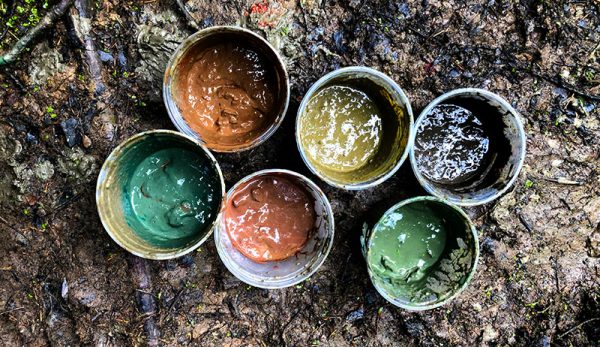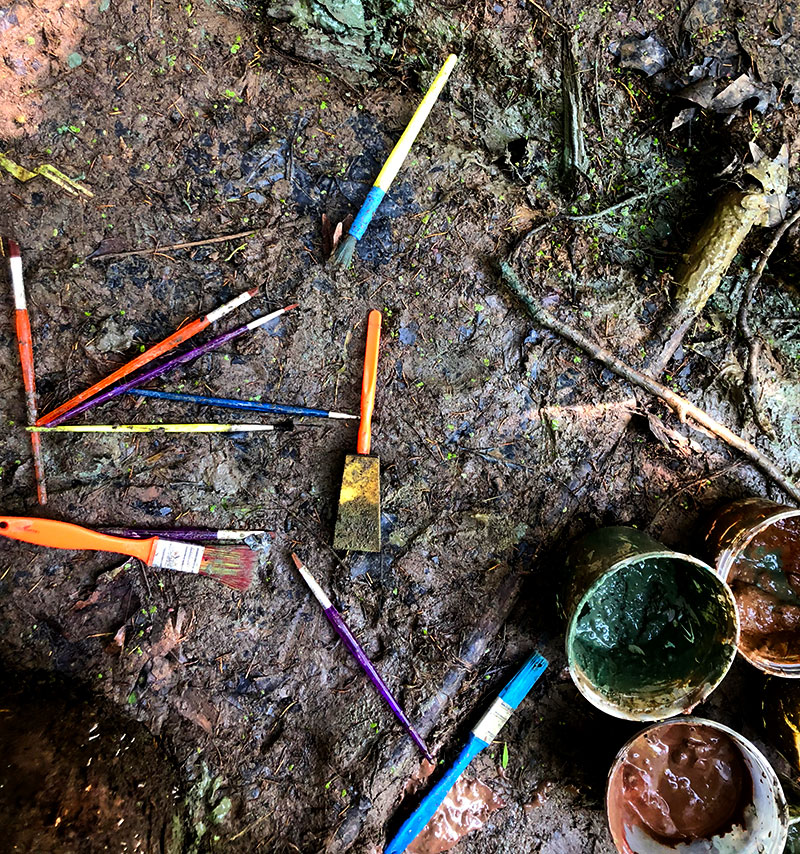
Super rainy periods on our farm get me down. Living halfway up a hill, excess precipitation can be problematic in a lot of ways. However, after a rainfall I love to kick off my boots and let my toes sink into the squishy earth floor. Playing in the mud never gets old, no matter how far I venture into adulthood. Perhaps that’s why I also love mud paint.
Making mud paint lets the kid in all of us have some fun in the mud after a rainfall. By literally adding a bit of color to the landscape after a slew of drab weather, it can lift your spirits and help you get in touch with your more artistic side. Although mud paints turn out a little more earthy than their acrylic counterparts for obvious reasons, you can use them in the same way—and that is part of the appeal.
What You’ll Need:
- Six containers
- Mud
- Food coloring
- Extra water for mixing
- Paintbrushes of various size
Step 1
Find a place on your farm where you can extract some mud without too many extra particles mixed in. If you find some sediment or pieces of grass or twig in the mud, don’t worry about it too much. The texture adds an artistic element. That said, the more pure the mud, the smoother the paint. As our soil contains a lot of clay, I found the mud around my pond the easiest to dig out.
Step 2
Fill your plastic containers with mud. The amount you use is up to you, but remember, if you run out while painting, it’s really easy to make more.
Step 3

Stir in food coloring to each container of mud until the color saturation appeals to you. I made paints in red, orange, yellow, green, blue and purple. Less food coloring makes the mud paint tones more earthy, while more makes the tones more brilliant. Start with a little food coloring (about 10 drops or so per container) and add more until you’re satisfied. If needed, pour some extra water into the mud for a thinner consistency and easier mixability.
Step 4

After your mud paints are assembled, the world is your canvas. You can use them for painting on canvas or paper as you would craft paints, but open yourself to other surfaces, as well. Grab different size and texture paintbrushes, and see where they take you.

Maybe there’s a tree that wants a portrait painted on it. Spruce up your marshmallow sticks for the evening’s campfire or the rocks in the campfire ring by painting designs on them. When my daughter and I made mud paints with friends, we had fun painting the bench by our pond—and even each other! Experiment with globbing the paint on thick or painting it smooth and thin. The great thing about mud paints? They don’t damage the environment. After the next rainfall, your canvas is washed clean and you can start anew.

So don’t become a stick in the mud after the next rainfall. Throw some paintbrushes in your pocket and head out to the nearest mud hole for a little bit of artistic fun.




